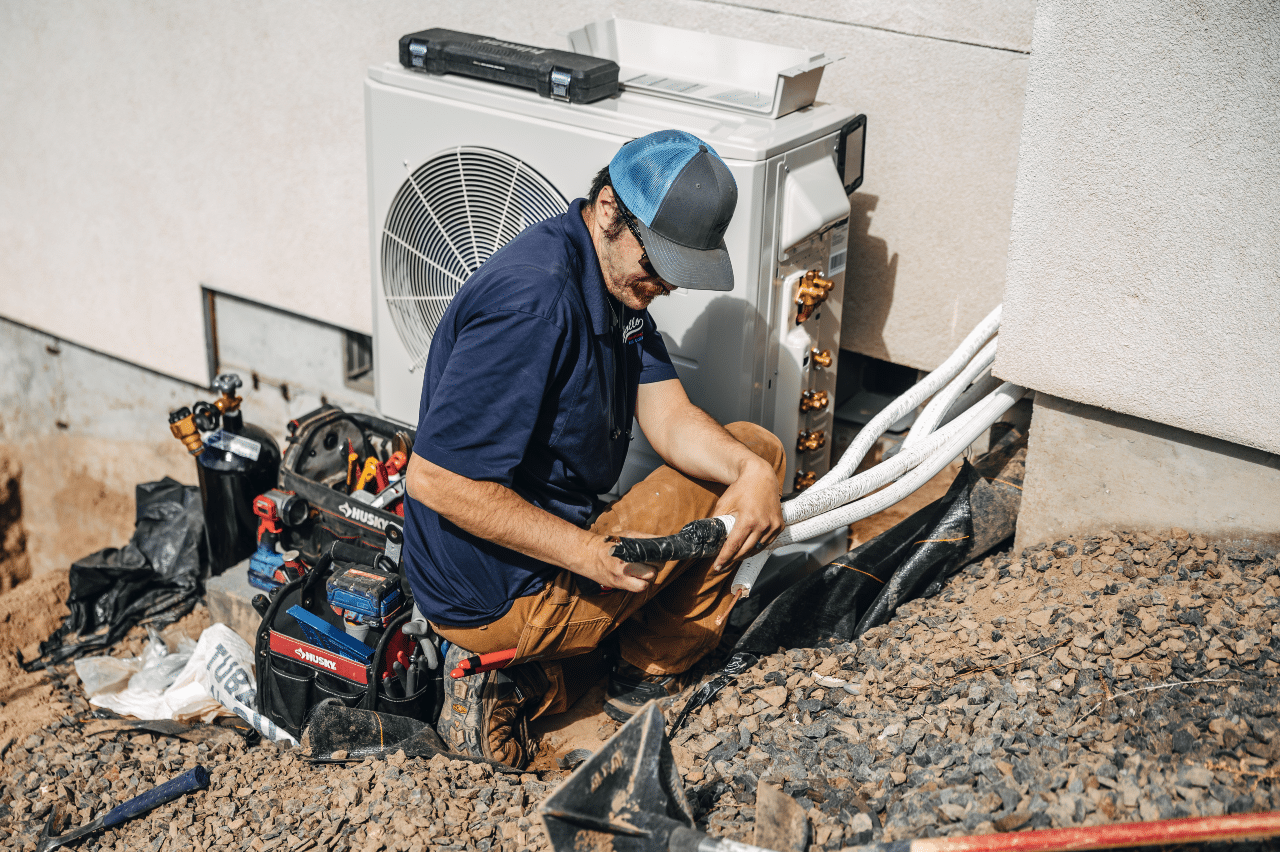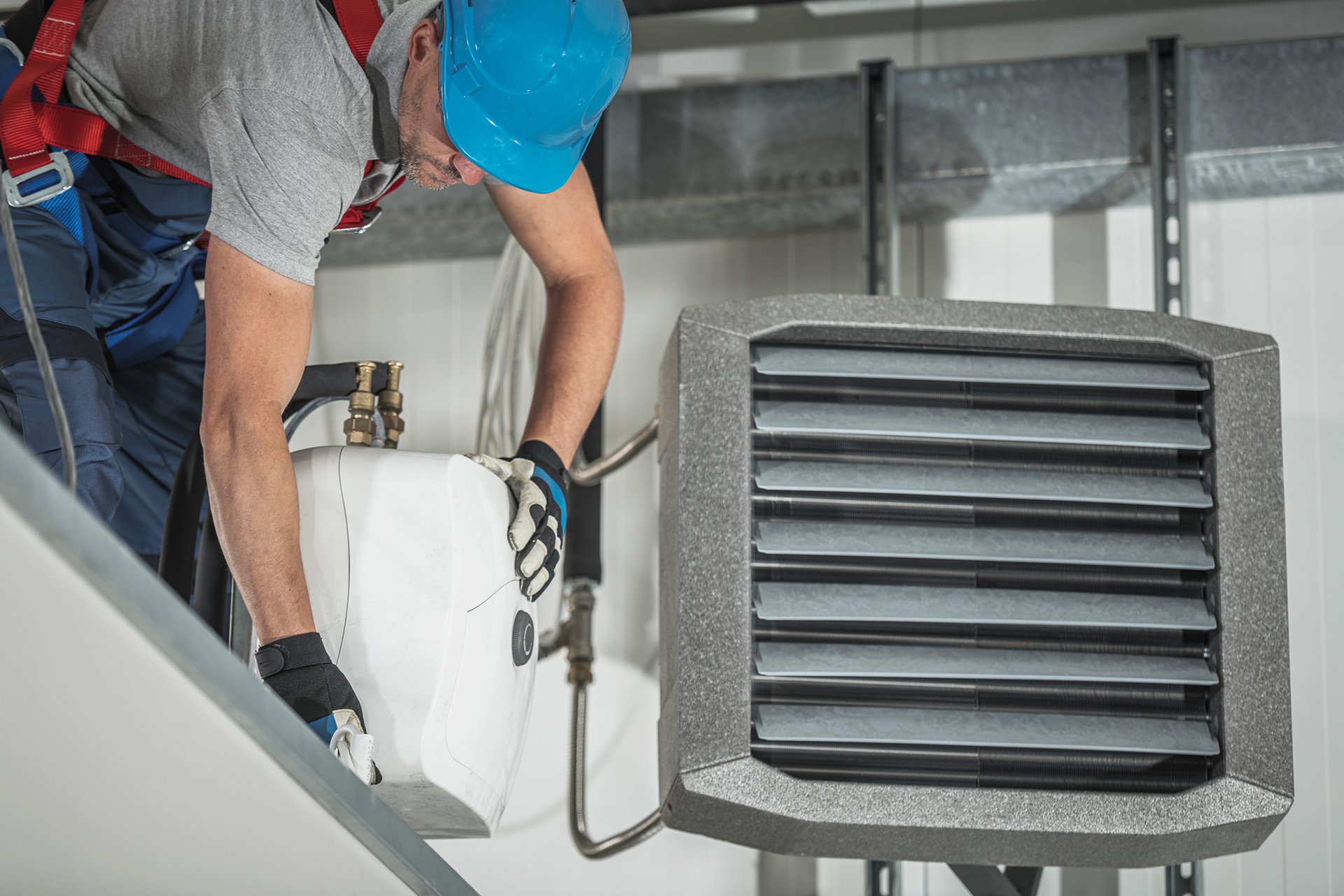Exactly How a Heatpump and Furnace Job With Each Other to Enhance Your Home's Home heating Effectiveness
Understanding how a heatpump and heater collaborate is important for property owners seeking reliable heating services. Each system has its strengths, giving a balanced method to home convenience. The heatpump masters modest temperatures, while the heating system delivers rapid heat during extreme cold. This harmony not just reduces energy prices however also boosts the life expectancy of both appliances. What aspects influence this collaboration, and just how can property owners optimize their advantages?
Understanding Warmth Pumps: How They Function
Although lots of people may be unfamiliar with their internal operations, heatpump play a vital role in modern heater. These devices operate by moving heat from one area to one more, utilizing the principles of thermodynamics. In chillier months, a warmth pump extracts warm from the outside air, ground, or water, and transfers it inside to warm the space. Conversely, during warmer months, it can turn around the procedure, functioning as an ac system by expelling warm from inside to the outside.Heat pumps include an evaporator, condenser, compressor, and development valve. The refrigerant within the system takes in warm as it vaporizes at reduced temperature levels and stress. The compressor after that increases the pressure and temperature of the refrigerant, permitting it to launch warmth as it condenses. This effective process can greatly lower energy usage compared to conventional heating approaches, making heat pumps a sustainable selection for environment control in homes.
The Role of Furnaces in Home Home Heating
Heaters play a crucial duty in home heating by providing a dependable source of warmth during the colder months. They operate by creating heat through burning or electrical resistance, dispersing it throughout the home via air ducts or radiant systems. The performance of a heater is usually measured by its Yearly Gas Use Effectiveness (AFUE) ranking, which suggests exactly how successfully the system transforms fuel into heat.Furnaces can utilize different energy sources, including natural gas, power, oil, or lp, allowing home owners to pick one of the most suitable choice for their needs. Unlike warmth pumps, which might struggle in severe cold, heaters keep regular efficiency, guaranteeing that indoor temperature levels continue to be comfy no matter of outdoor conditions. Furthermore, modern heating systems typically come geared up with innovative technology, such as variable-speed blowers and clever thermostats, enhancing their effectiveness and responsiveness. This versatility makes heating systems an essential part in all-inclusive home heating strategies.

Benefits of Utilizing Both Solutions Together
Combining the strengths of both furnaces and heat pumps can result in a more reliable and effective home heating service. Using both systems allows homeowners to make use of the warm pump's energy efficiency throughout milder temperature levels while relying upon the heating system for more severe cold conditions. This double technique can greatly reduce energy expenses, as warm pumps consume much less power than traditional home heating methods when temperature levels are moderate.Additionally, using both systems with each other can improve comfort levels in the home. Warm pumps can provide regular, also home heating, while heating systems can quickly elevate ambient temperature levels when required. Additionally, the integration of both systems can expand the lifespan of tools by minimizing deterioration on each system, as they share the workload. Eventually, property owners can delight in a well balanced, cost-efficient heating solution that readjusts perfectly to differing climate condition, ensuring a warm and inviting home throughout the cold weather.
Exactly How Heat Pumps and Furnaces Complement Each Other
When home owners integrate heatpump and furnaces, they create a complementary heating unit that takes full advantage of performance and convenience. Heatpump run by moving heat from the outside air or ground, making them highly efficient in modest climates. They succeed throughout milder temperature levels, giving cost-effective heating. Conversely, heaters generate heat through burning or electrical resistance, supplying solid, instant warmth during extreme cool conditions.The mix of these two systems enables for vibrant changes based upon temperature level fluctuations. During warmer months or milder winter season days, the heatpump can take the lead, conserving energy and decreasing costs. As temperatures drop, the furnace can seamlessly involve, making certain consistent warmth throughout the home. This harmony not just enhances power usage yet likewise enhances the life-span of both systems, as each device runs within its suitable performance range. Together, they create a well balanced atmosphere that adjusts to differing environment needs.
Optimizing Performance: Tips for Homeowners
House owners can boost their home heating efficiency via a number of practical strategies. Developing a regular upkeep routine, integrating clever thermostat innovation, and implementing efficient insulation and securing remedies see this page are crucial actions. These procedures not only enhance comfort however likewise reduce power prices.
Routine Maintenance Arrange
To guarantee maximum home heating efficiency, establishing a normal maintenance routine is vital for any home. House owners must prioritize routine examinations of both heatpump and heating systems to identify peak performance. This consists of transforming air filters every one to 3 months, as clogged filters can substantially minimize effectiveness. Additionally, organizing specialist upkeep a minimum of once a year allows service technicians to recognize and address prospective concerns prior to they escalate. Property owners need to also clean up the heatpump's outside unit to stop debris buildup that can hinder air flow. By adhering to a regular maintenance schedule, house owners not just enhance their heating systems' efficiency but additionally extend their life expectancy, leading to higher convenience and lowered power prices throughout the colder months.
Smart Thermostat Integration
Incorporating a smart thermostat into a home heating system can greatly boost energy effectiveness, especially as it permits for precise control over temperature settings. These devices can find out the house owner's routine and preferences, automatically readjusting the temperature to enhance convenience while reducing power use. They can decrease heating throughout dig this times when the home is vacant, minimizing unnecessary intake. Numerous clever thermostats likewise offer real-time power usage information, allowing house owners to make informed decisions concerning their heating practices. In addition, remote access by means of smartphone applications allows customers to change setups from anywhere, making sure the home is cozy upon return. In general, smart thermostat assimilation not only enhances convenience but considerably adds to power savings and effectiveness.
Insulation and Securing Solutions
Smart thermostats play a critical duty in energy performance, but their efficiency can be substantially enhanced by proper insulation and sealing solutions. Property owners must focus on shielding wall surfaces, attic rooms, and floors to lessen warmth loss. Top quality insulation materials, such as spray foam or fiberglass, can significantly enhance thermal resistance. Furthermore, securing voids around air ducts, home windows, and doors avoids cold air infiltration and warm retreat. Weatherstripping and caulking work approaches for resolving these leakages - ductless mini splits. Routine evaluations for air leaks, along with the use of blower door examinations, can help determine trouble areas. By purchasing insulation and securing, home owners can maximize the efficiency of their heating unit, inevitably leading to reduced power usage and reduced utility bills
Common Misconceptions Regarding Warmth Pumps and Furnaces
What misconceptions surround heat pumps and heating systems? Lots of people wrongly believe that heat pumps are ineffective in colder environments. Actually, modern heat pumps are developed to run successfully even in low temperatures, giving trusted home heating throughout winter season. Another common myth is that furnaces are constantly a lot more reliable than warm pumps. However, this depends upon the specific energy resources and efficiency ratings of the systems in concern. Some may likewise think that making use of both systems at the same time is unnecessary, however actually, this mix can maximize heating efficiency, particularly throughout extreme climate condition. Furthermore, individuals typically assume that warmth pumps need consistent upkeep, when in reality, they have similar upkeep needs to standard heater. By debunking these myths, property owners can make even more informed decisions regarding their heating choices, inevitably leading to improved convenience and power efficiency in their homes.
Upkeep Considerations for Combined Systems

Regularly Asked Inquiries
Can Warmth Pumps Job Efficiently in Extremely Cold Climates?
Heatpump can battle in very cool climates as a result of reduced performance and heat removal constraints. Innovations in modern technology have actually led to models created for far better efficiency in such conditions, enhancing their practicality in rough settings.
The Length Of Time Do Warm Pumps and Furnaces Normally Last?
Warm pumps normally last 15 to twenty years, while heating systems have a lifespan of 15 to three decades. Regular maintenance can prolong their durability, making sure effective operation and lowering the demand for premature replacements.

What Is the Ordinary Cost of Installing Both Equipments?
The typical price of installing both a heat pump and a furnace normally ranges in between $5,000 to $10,000 - ductless mini splits. Variables affecting this price consist of system size, installment complexity, and regional labor rates
Are There Tax Obligation Rewards for Using Energy-Efficient Home Heating Equipments?
Several house owners ask about tax incentives for energy-efficient heater. Various federal and state programs typically use credit reports or refunds, urging the fostering of sustainable modern technologies to decrease energy intake and promote environmental duty.
Just how Do I Choose the Right Dimension Heatpump and Heating System?
Picking the ideal size warm pump and heater includes computing the home's square video, taking into consideration insulation high quality, and examining neighborhood climate. Consulting a professional can guarantee suitable system performance and power effectiveness based upon particular needs. ductless mini splits. Comprehending exactly how a warm pump and heater job with each other is important for homeowners seeking reliable heating services. In chillier months, a warmth pump essences warm from the outdoors air, ground, or water, and transfers it indoors to warm up the living room. When house owners integrate warm pumps and heaters, they create a corresponding home heating system that optimizes effectiveness and comfort. Heat pumps operate by transferring warmth from the outdoors air or ground, making them very effective in moderate climates. Warmth pumps can have a hard time in extremely chilly environments due to minimized effectiveness and heat removal constraints